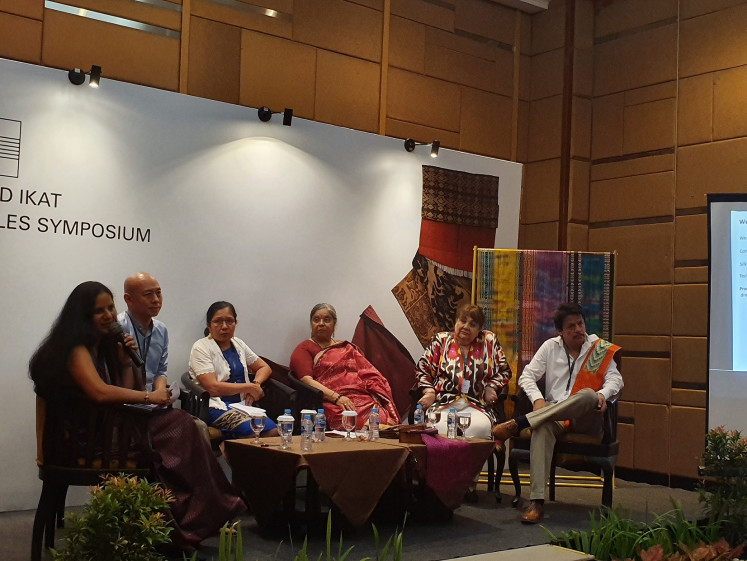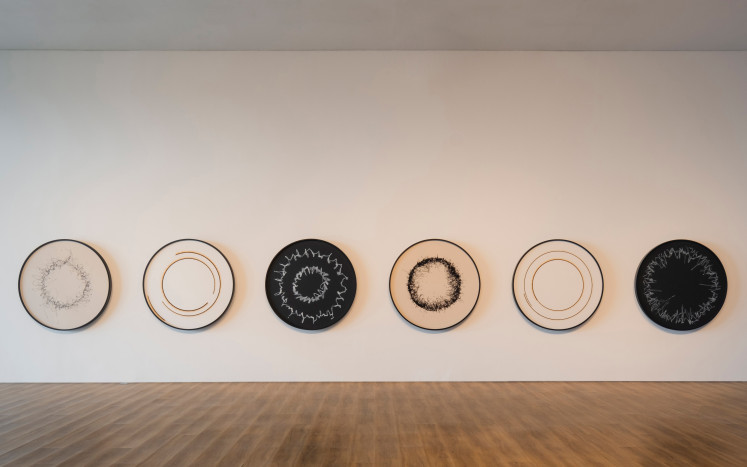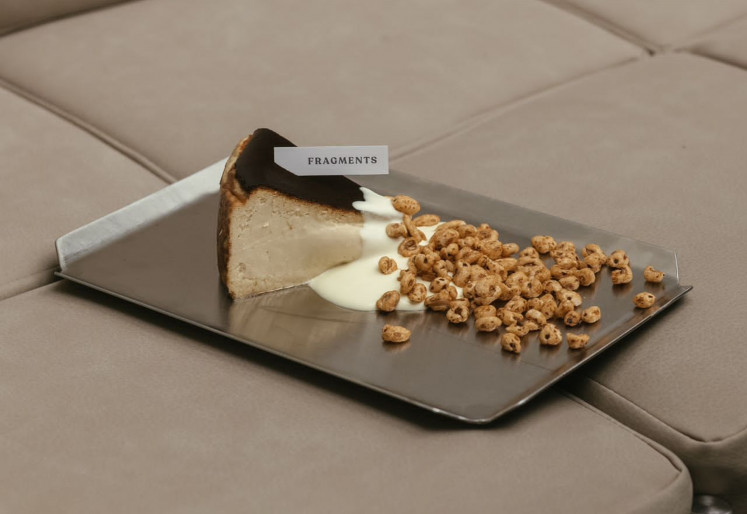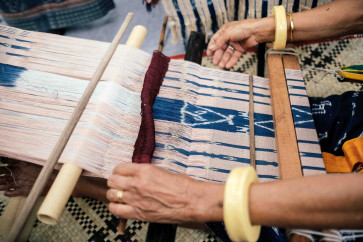Popular Reads
Top Results
Can't find what you're looking for?
View all search resultsPopular Reads
Top Results
Can't find what you're looking for?
View all search resultsIkat artisans work together to save world heritage
Artisans take measures to make the ancient art of ikat weaving and its products younger and more sustainable.
Change text size
Gift Premium Articles
to Anyone
C
ollective efforts to popularize tenun ikat (handwoven fabric) have gained momentum as slow fashion is on-trend riding on the back of the global movement of sustainable development.
There were challenges that still needed to be tackled, according to the speakers at the World Ikat Textiles Symposium (WITS) recently in Jakarta, but there is already rising attention for the product.
Collective work: Symposium speakers (from left) Gunjan Jain (India), Meechai Taesujariya (Thailand), Rosalia Madeira Soares (Timor-Leste), Natalya Musina (Uzbekistan) and Arturo Estrada Hernandez (Mexico) talk about the new challenges they are facing in promoting 'ikat' traditions. (JP/Tertiani ZB Simanjuntak)Indian textile designer and researcher Gunjan Jain said some changes had been made to make ikat textiles more accessible and affordable to counter the mass production of stamp print fabric with ikat motifs despite the prevailing 1985 Handloom Preservation Act.
She also shared how textile artisans still preserved the unique calligraphic Odisha ikat technique while at the same time made the design more appealing to the younger generation.
“It will be better for ikat artisans to apply new motifs to attract young people rather than remain stuck in the traditional motifs which in the end only become a relics in a museum,” she said.
Mexican artisan Arturo Estrada Hernandez, who revived the traditional ikat rebozo, shared his experience of being accused by the people of trying to diminish the old traditions.




















